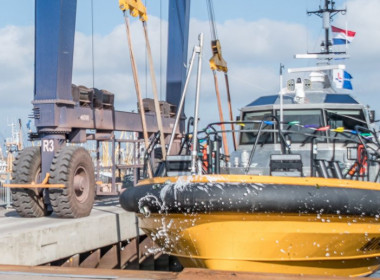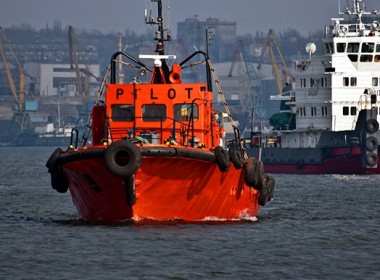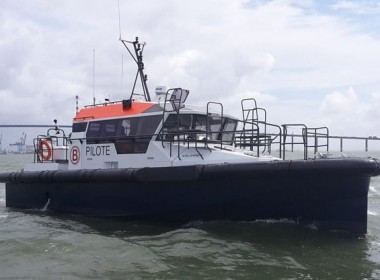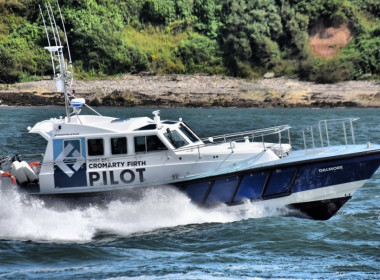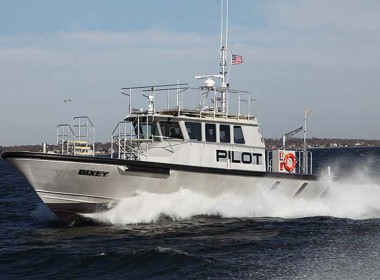VESSEL REVIEW | Mira – Dutch Pilotage Service takes on first pilot boat in a series

The Netherlands’ Next Generation Shipyards (NG Shipyards) has delivered an aluminium, high-speed pilot tender to the Dutch Pilot Association (Nederlands Loodswezen).
Mira will be used for pilotage tasks in the harbours and coastal waters of the Netherlands, transporting Dutch pilots to big ships at sea to bring them safely and on schedule to their destinations in Dutch harbours.
The brand new Camarc-designed hull offers low resistance in combination with lower weight, making the ship very fuel-efficient, and provides effective manoeuvring abilities.
The refinement of a previous Camarc design has taken place in the forward third of the hull, with the most notable change observed in the extended waterline length. This improves efficiency and seakeeping in itself, but has also allowed for finer sections forward to further enhance efficiency and reduce slamming vertical accelerations.
The resulting vertical stem at the bow is importantly above water only and the hull retains a curved forefoot at entry for all-round seakeeping. This curved forefoot is also relevant to pilotage.
Nederlands Loodswezen was able to verify, through extensive testing across its pilotage stations, the suitability of the new hull for pilotage duties with boarding and breaking away from the ship side.
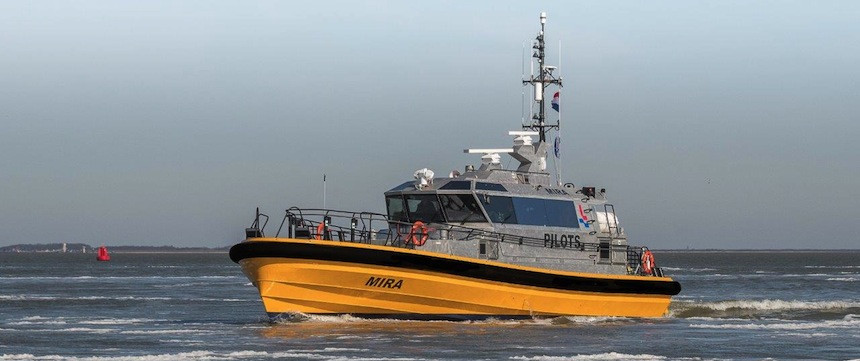
According to NG Shipyard, the owner required a ship that was suitable for pilotage tasks with high safety levels, high speed, and low fuel consumption and emissions.
The layout had to be logical and orderly with short pipes and cable routes. All components were to be of high quality and easily accessible for maintenance. In case of failure of an essential system, there was to be a fully redundant, automatic takeover system available to assure safe operations at all times.
The biggest challenge for NG Shipyards in building the vessel was to find extra weight savings and to maintain accurate weight control during the whole building process. The outfitting had to be comfortable with high-end heating, cooling and drying systems.
The ship is equipped with an all-around safety rail system to guide pilots and crew safely to the boarding positions on the deck. Decks and railings are heated for the best grip and use in low temperatures. Toward the stern of the boat there is a hydraulic operated MOB cradle to retrieve people out of the water in emergency situations.
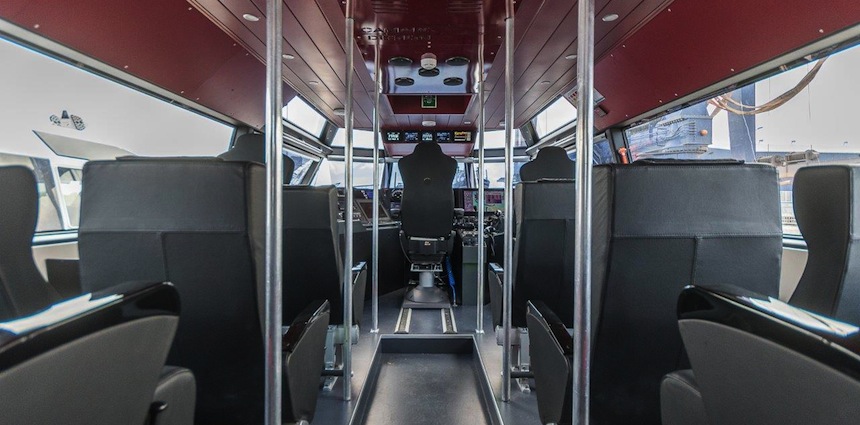
The spacious wheelhouse is placed on rubber dampers and can easily be removed for maintenance and engine changes. It features three Eblo air suspension ISRI seats for the pilots and 12 luxury passenger seats.
The noise level is extremely low due to sound damping construction, the use of sound absorbing materials, and the resiliently mounted wheelhouse.
On top of the wheelhouse is a Luminel searchlight with FLIR camera and PLB coupling, allowing the light to follow victims in man overboard situations to make it easier to find them in the water and sail to the right place.
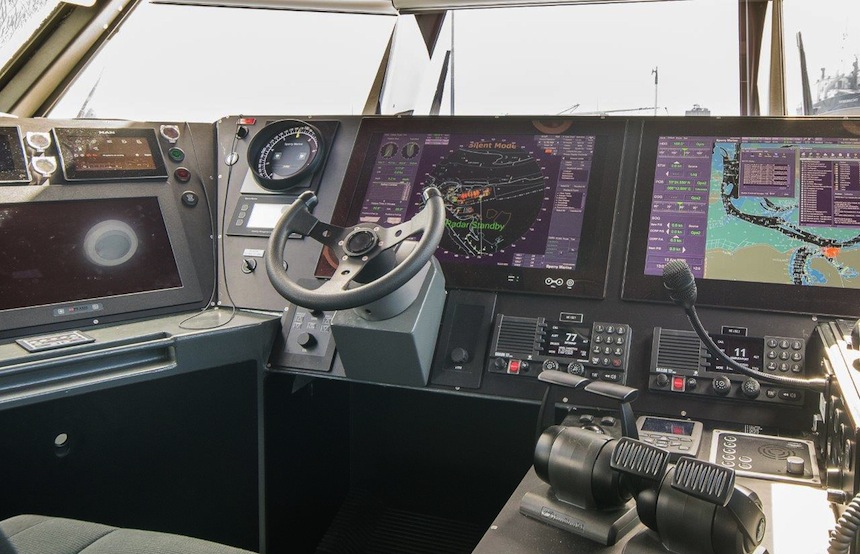
The complete setup of navigation electronics was supplied by Sperry Marine. The system comprises two radars, multiple GPS devices, compass systems, an autopilot, gyro system, depth sounder and more. All the information can be accessed on three Vision Master screens.
The owner wanted to replace older vessels with new designs and more efficient boats with less fuel consumption. It wanted to update its fleet to these new requirements in order to give the best service to their customers and reduce its carbon footprint.
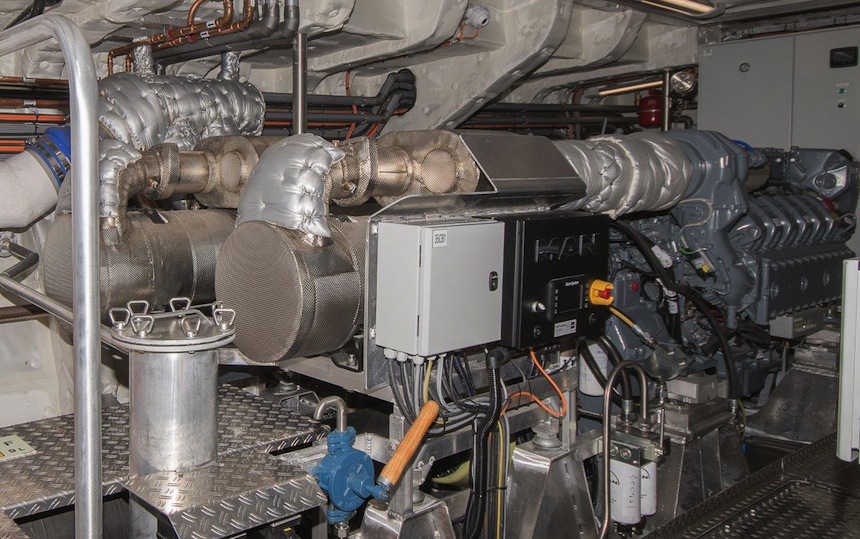
Two MAN D-2862LE438B main engines are connected with carbon shafts and couplings to Hamilton HM571 waterjets. With the factory-supplied SCR installation, the engines meet Tier 3 emission standards.
The propulsion system is over-specced, and the required speed can be achieved with reduced power. This results in over 25 per cent fuel savings.
A Humphree interceptor system with active ride control is mounted to get the right trim and list depending on the circumstances.
The 24V board net is powered by two Mastervolt high power alternators on each main engine. The lithium-ion batteries are charged with Combi Pro inverters via shore power, or generate 230 volts for the equipment. This setup was chosen to supply all the power to essential systems without using a generator.
Only one generator is needed for the comfort systems and as a backup for the power system. Essential systems have backups and problems are tracked with alarms and monitoring systems.
More Pilotage Week reviews, features and news right here

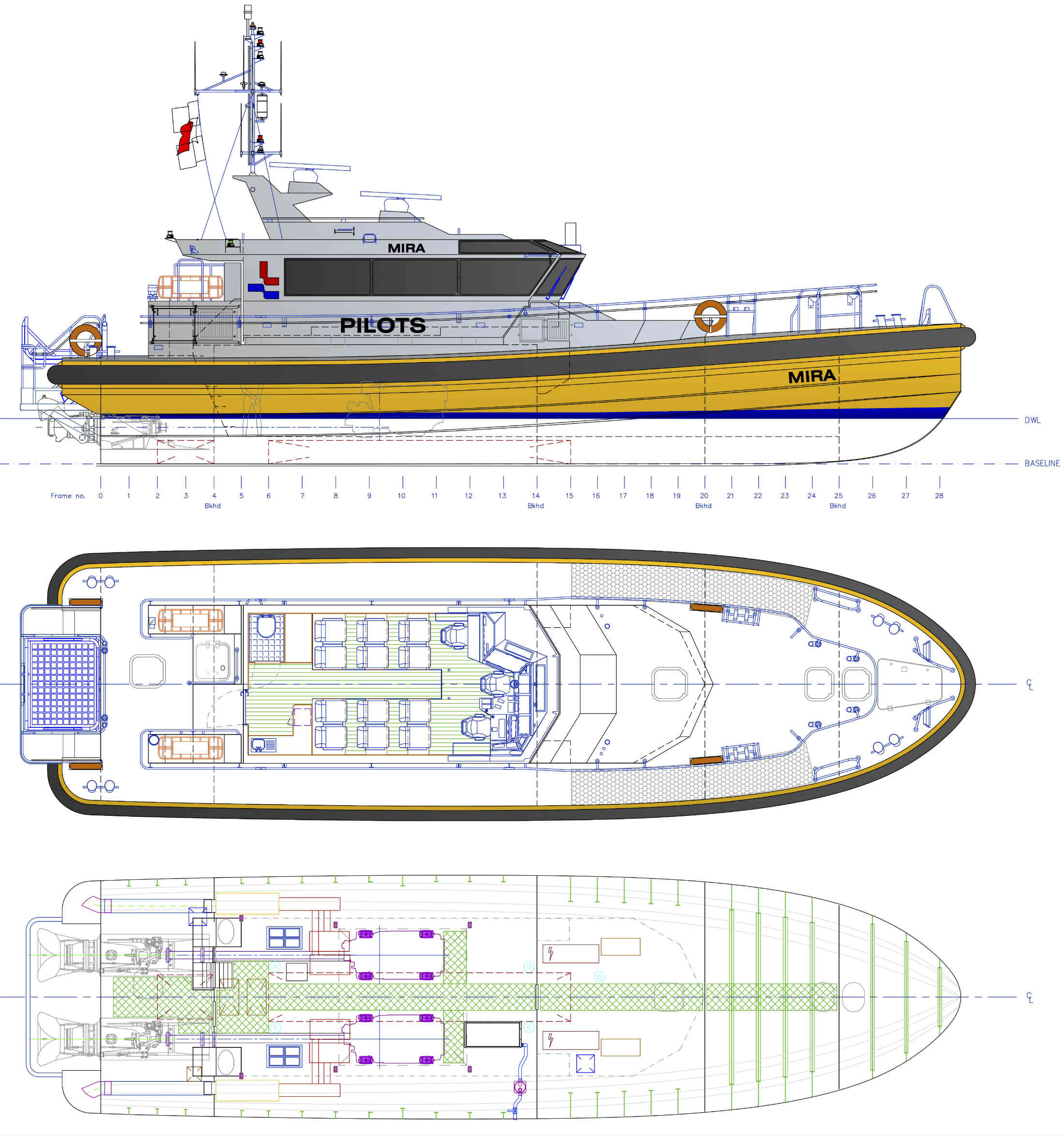
| Mira | |
| SPECIFICATIONS | |
| Type of vessel: | Pilot boat |
| Classification: | BV |
| Port of registry: | Rotterdam |
| Flag: | Netherlands |
| Owner: | Nederlands Loodswezen, Netherlands |
| Operator | Nederlands Loodswezen, Netherlands |
| Designer: | Camarc, UK |
| CAD software: | Rhino 3D; AutoCAD |
| Builder: | Next Generation Shipyards, Netherlands |
| Hull construction material: | Aluminium |
| Plate cutting: | Milled |
| Length overall: | 22.8 metres |
| Length waterline: | 20.1 metres |
| Beam: | 6.5 metres |
| Draught: | 1.10 metres |
| Displacement: | 39 tonnes |
| Main engines: | 2 x MAN D-2862LE438B Tier 3 with SCR |
| Gearboxes: | 2 x ZF3050 |
| Propulsion: | 2 x HamiltonJet HM571 |
| Generator: | Onan MDKDU, 27 kW |
| Steering system: | HamiltonJet |
| Maximum speed: | 38 knots |
| Cruising speed: | 30 knots |
| Range: | 310 nautical miles |
| Batteries: | Mastervolt lithium ion |
| Hydraulic equipment: | Trydo MOB cradle |
| Electronics supplied by: | Alewijnse; Sperry Marine |
| Radar: | Sperry Marine |
| Depth sounder: | Skipper |
| Radio: | Sailor |
| Autopilot: | Sperry Marine |
| Compass: | Sperry Marine |
| GPS: | Sailor |
| Plotters: | Sperry Marine VisionMaster Net |
| AIS: | Sailor |
| Audio video system: | Praxis |
| Other electronics: | Luminel Searchlight with FLIR camera and PLB coupling |
| Other electronics: | Humphree interceptor systems with active ride control |
| Alarm systems: | Praxis |
| Paints/coatings: | Sigma PPG |
| Windows: | Hora |
| Seating: | Eblo air suspension ISRI Seats |
| Lighting: | Hella |
| Interior designer: | NG Shipyards |
| Interior fitout/furnishings: | NG Shipyards |
| Safety equipment: | Datema |
| Liferaft: | Survitec |
| Type of fuel: | Diesel EN590 |
| Fuel capacity: | 3.6 m3 |
| Fuel consumption: | 0.34 m3/h |
| Freshwater capacity: | 0.075 m3 |
| Sewage/blackwater capacity: | 0.050 m3 |
| Crew: | 3 |
| Passengers: | 12 |





